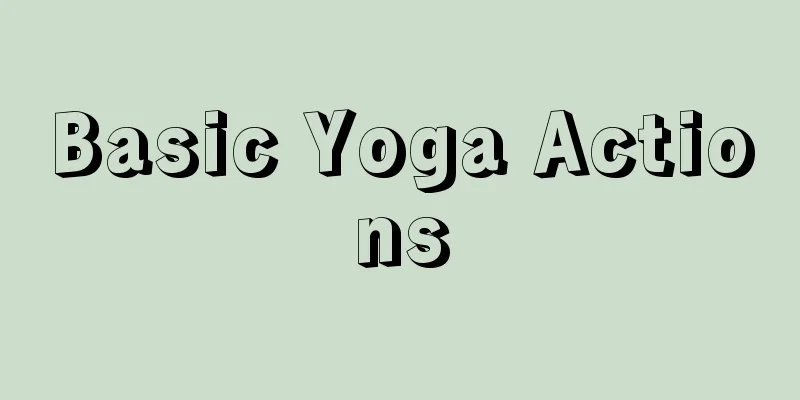Basic Yoga Actions

|
When women choose to exercise, they usually choose yoga because yoga is an aerobic exercise that was introduced to China from India. Yoga can effectively relax the body and mind, and make the body more flexible and the body lines more obvious. However, yoga also has different difficulty levels. Beginners should learn the basic yoga movements. The following will explain to you what the basic yoga movements are. Which type of yoga should beginners learn? Yoga suitable for beginners includes Hatha Yoga, Hot Yoga and Iyengar Yoga. Hatha Yoga Hatha Yoga, also known as traditional yoga, was founded by Swami Sivanada, a modern Indian yoga master. In the word Hatha, 'ha' means sun and 'tha' means moon. It represents the balance of male and female, day and night, yin and yang, hot and cold, and any other opposites that complement each other. Hatha Yoga asana practice includes 24 asanas, which mainly practice how to control the body and breathing. The deeper effect is to make the body's functions run in an orderly manner, so that the mind can gain tranquility and become peaceful. Hatha Yoga is best suited for beginners. It does not require perfection nor is it a competitive practice. Instead, it emphasizes the feeling of each pose. Hatha Yoga in China mainly focuses on postures and breathing exercises, supplemented by meditation and bandha methods. This is the system taught in most yoga studios. Hot Yoga Hot Yoga, also known as high-temperature yoga or thermal yoga, is yoga performed in a high temperature environment of 38 to 40 degrees. The high temperature environment consists of 26 stretching movements, which are flexibility exercises that can improve the flexibility of the spine and are suitable for office workers. In addition, the high temperature environment of hot yoga can make you sweat quickly, help improve migraines, back pain, make people feel younger, and delay aging. It can also directly stimulate the neuromuscular system, thereby reducing weight. Many celebrities rely on hot yoga to lose weight, such as Gao Yuanyuan, Fan Bingbing, Carina Lau, Lady Gaga, etc. However, it is not suitable for people with hypertension and cardiovascular diseases. Iyengar Yoga Iyengar Yoga is a unique style of yoga system created and taught by Indian yoga master BKS Iyengar. The asanas practiced come from traditional yoga. The style of Iyengar Yoga emphasizes the rational combination of human physiological structure and postures, and uses a large number of auxiliary tools for practice, such as bricks, belts, walls, etc. It is suitable for beginners, people with weak bodies and those with stiff bodies, and also for practitioners who need to improve the quality of their postures. Twelve basic yoga postures 1. Prayer How to do it: Stand upright with your feet together. Put your hands together in front of your chest. Relax your whole body. Regulate your breathing. 2. Spread arm style How to do it: Raise your upper arms above your head, with your arms shoulder-width apart. Tilt your head and upper body back slightly. Breathing: Inhale as you raise your arms. 3. Forward Bend How to: Bend forward until your hands or fingers can touch either side of your feet, or the ground in front of your feet. Use your forehead to touch your legs, but don't strain. Keep your knees straight. Breathing: Exhale as you bend forward. In the final position, try to contract your abdomen and exhale as much as possible. 4. Lying Butterfly Method: Sit on the ground, put your feet together, heels close to the base of your thighs, and hold your toes with both hands. Press each knee down so that they touch the ground one at a time, like a butterfly flapping its wings. Then sit quietly, put your body weight on your hips and thighs, and feel the sciatic pain slowly disappear. 5. Eye Snake Method: Lie on the ground, put your hands slightly forward, and use the strength of your elbows to support your upper body. Use your neck and chin to tilt your head slightly toward your back. Pull your lower abdomen back, as if someone is pulling your arms back. Slowly transfer your body weight from your abdomen to your back. Tilt your head up and relax your face. 6. Pigeon pose Method: Sit cross-legged, push your right knee forward, stretch your left leg backward, try to bend your front leg 90 degrees, and sit with your head held high. When you exhale, lean your upper body forward, rest your chest on your thighs, and stretch your arms forward. 7. Baby’s Pose How to do it: Kneel down with your buttocks resting on your heels, toes touching, and knees slightly apart. Bring your chest toward your thighs until your forehead touches the floor. The arms can be extended forward or out to the sides. Take a deep breath and hold this position for as long as you want. 8. Horseback riding (Crescent pose) How to: Extend your right leg back as far as you can. Bend your left leg at the same time, but keep your right foot in place. Keep your arms straight in place. At the end of the movement, your body weight should be supported by your hands, left foot, right knee, and right toes. In the final position, the head should be tilted back, the back arched, and the gaze upward. 9. Mountain pose (peak pose) How to do it: Straighten your legs, put your feet together, lie forward with your buttocks raised in the air, and lower your head so that it is between your arms. The body should form the two sides of the triangle. In the final position your legs and arms should be straight, try to keep your heels on the ground in this position. 10. Downward Dog How to do it: Make your body into an inverted "V" shape. Stretch your hands forward on the floor, stick your buttocks up, and keep your legs hip-width apart. Move forward along the ground with your hands while controlling your breathing. Hold the stretch for 30 to 60 seconds. 11. Fish pose Method: Lie on your back with your toes pointed downward and your legs stretched forward. Put your hands under your hips, support your body with your elbows, and arch your back. Keep your head on the ground, letting your elbows bear your body weight. Take a deep breath and hold it for 15 to 30 seconds. 12. Cat pose How to do it: Kneel on the ground with your hands on the ground, your arms and feet shoulder-width apart, and your eyes looking at the ground. As you inhale, contract your abdomen like you are yawning, and keep your ribs tense like a cat. As you exhale, arch your back and lift your chest like a cow. Repeat three to five times, focusing on your breathing. |
<<: Newborn baby care knowledge
>>: Are hip-lifting underwear effective?
Recommend
Should surgery be performed for early stage lung cancer
A 53-year-old male patient was diagnosed with ear...
How to massage the red blood streaks, teach you 5 massage techniques
I believe that many girls are troubled by red blo...
What is the early stage of breast hyperplasia like?
Fibrocystic breast disease refers to the prolifer...
Bad living habits can lead to breast cancer
Breast cancer is one of the more common malignant...
What are the symptoms of gallbladder cancer metastasis
What are the symptoms of gallbladder cancer metas...
Can't drink Coke and boil ginger at night
Ginger is a common ingredient in our daily life. ...
How to measure breast size
You can measure the size of your breasts by yours...
What are the side effects of autohemotherapy?
There are many treatment methods that can be used...
What are the bones on both sides of the foot called
Among our bones, the foot bones support the bones...
How to improve the nutrition of breast milk?
For younger babies, the main source of nutrition ...
How much do you know about liver cancer care? Five things to do when caring for liver cancer patients
Whether the patient is in a stable condition, und...
Is it useful to get a bivalent cervical cancer vaccine at the age of 40
It is still useful to vaccinate with a bivalent c...
What is stage 4 nasopharyngeal cancer? How long can one live with stage 4 nasopharyngeal cancer?
What is stage 4 nasopharyngeal cancer? How long c...
What tests should be done for glioma
Glioma is a brain tumor disease that has no sympt...
How to prevent bladder cancer?
Bladder cancer is the most common malignant tumor...









